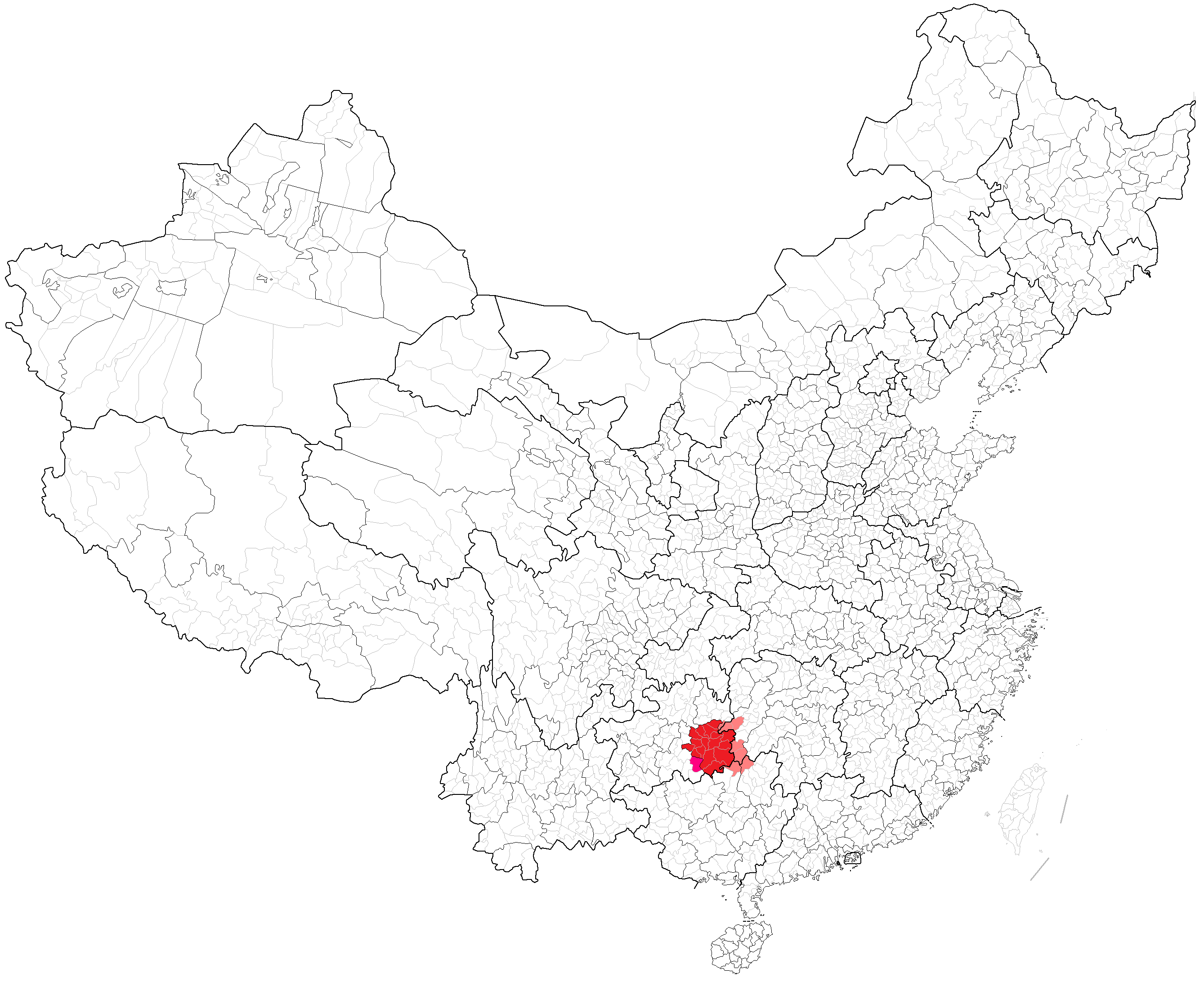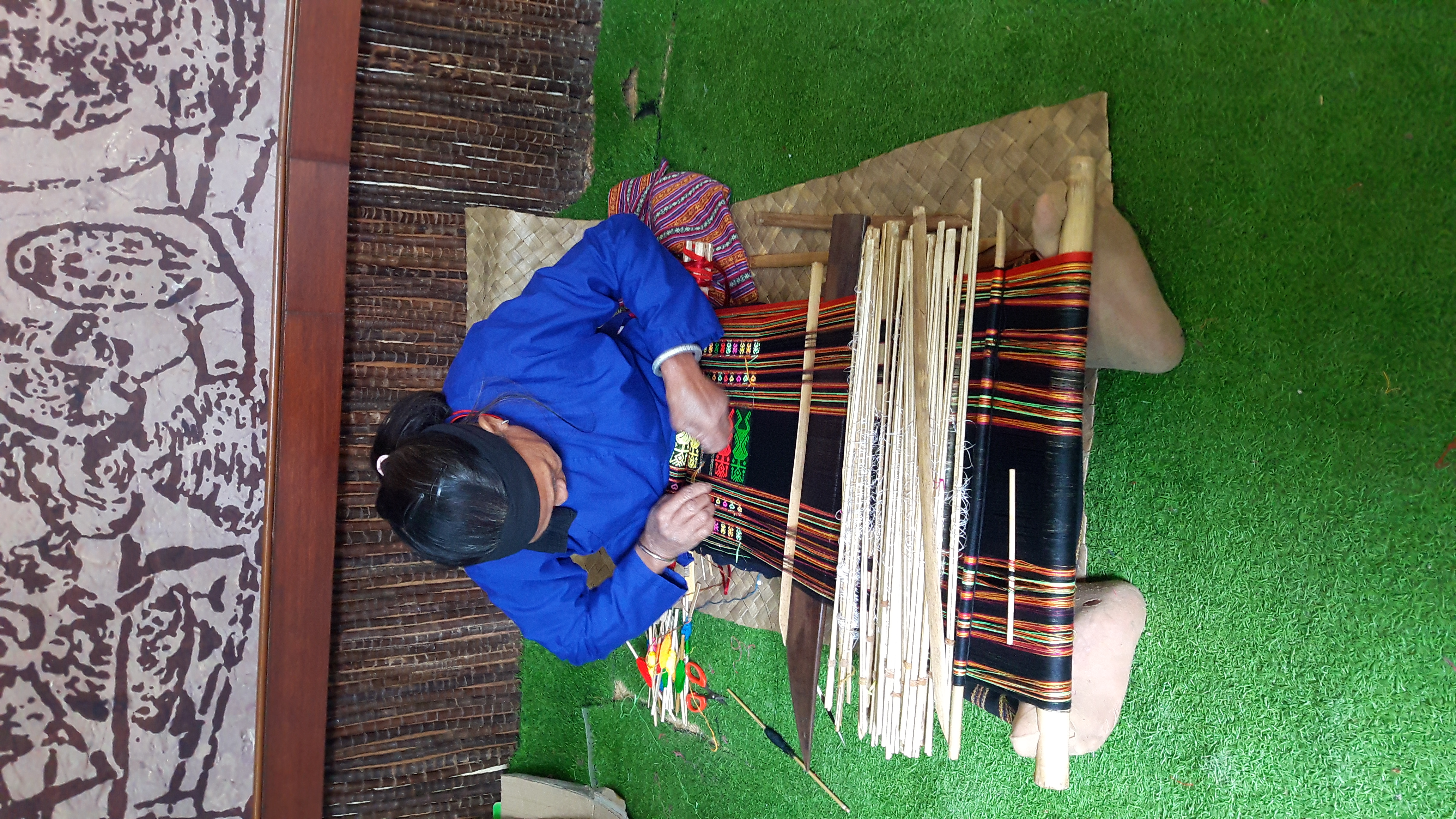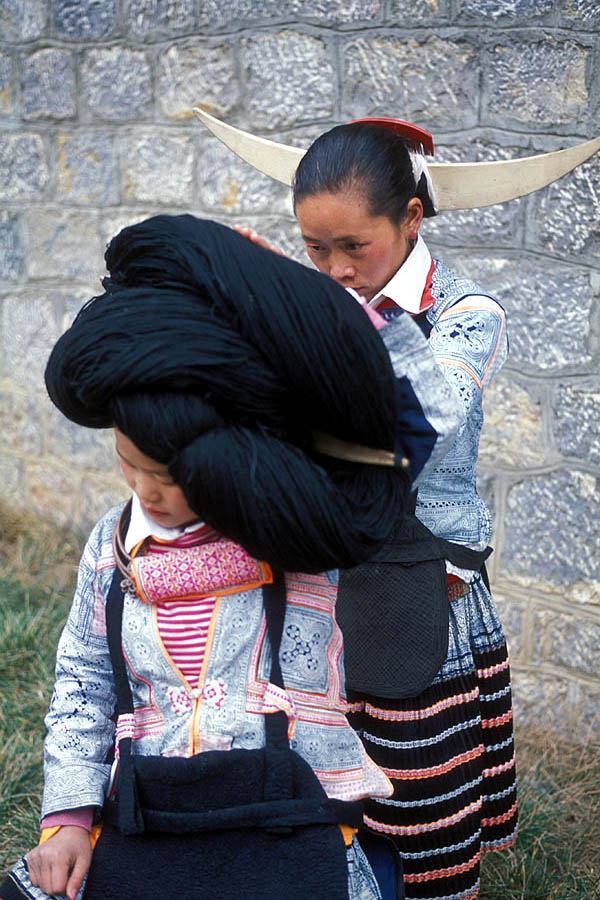|
Gongcheng Yao Autonomous County
Gongcheng Yao Autonomous County () is a county within the prefecture-level city of Guilin, Guangxi, China. The county spans a total area of , and has a population of approximately 300,000 as of 2011. History The area was first incorporated under the Sui Dynasty as Chacheng County (). During the Tang Dynasty it was changed to Gongcheng County (). On February 3, 1990, Gongcheng County was changed to Gongcheng Yao Autonomous County. Geography Most of the county is mountainous in nature, sans the lower southern portion of the county, and the valley along the Cha River. Common fruits in the area include peaches, persimmons, plums, loquat, and mandarin oranges. In the spring, red and pink peach blossoms bloom, and in autumn, the county's persimmons bloom. Climate The climate of Gongcheng is subtropical monsoon climate. Summer is hot, humid and long, whereas winters are dry and short. The county also receives adequate light and abundant rainfall. Annual rainfall averages , and an ... [...More Info...] [...Related Items...] OR: [Wikipedia] [Google] [Baidu] |
Postal Code Of China
Postal codes in the People's Republic of China () are postal codes used by China Post for the delivery of letters and goods within mainland China. China Post uses a six-digit all-numerical system with four tiers: the first tier, composed of the first two digits, show the province, province-equivalent municipality, or autonomous region; the second tier, composed of the third digit, shows the postal zone within the province, municipality or autonomous region; the fourth digit serves as the third tier, which shows the postal office within prefectures or prefecture-level cities; the last two digits are the fourth tier, which indicates the specific mailing area for delivery. The range 000000–009999 was originally marked for Taiwan (The Republic of China) but is not used because it not under the control of the People's Republic of China. Mail to ROC is treated as international mail, and uses postal codes set forth by Chunghwa Post. Codes starting from 999 are the internal ... [...More Info...] [...Related Items...] OR: [Wikipedia] [Google] [Baidu] |
Towns Of China
When referring to political divisions of China, town is the standard English translation of the Chinese (traditional: ; ). The Constitution of the People's Republic of China classifies towns as third-level administrative units, along with for example townships (). A township is typically smaller in population and more remote than a town. Similarly to a higher-level administrative units, the borders of a town would typically include an urban core (a small town with the population on the order of 10,000 people), as well as rural area with some villages (, or ). Map representation A typical provincial map would merely show a town as a circle centered at its urban area and labeled with its name, while a more detailed one (e.g., a map of a single county-level division) would also show the borders dividing the county or county-level city into towns () and/or township () and subdistrict A subdistrict or sub-district is an administrative division that is generally smaller than a ... [...More Info...] [...Related Items...] OR: [Wikipedia] [Google] [Baidu] |
Tujia People
The Tujia ( Northern Tujia: ''Bifjixkhar'' / ''Bifzixkar'', IPA: , Southern Tujia: ''Mongrzzir'', ; ) are an ethnic group and, with a total population of over 8 million, the eighth-largest officially recognized ethnic minority in the People's Republic of China. They live in the Wuling Mountains, straddling the common borders of Hunan, Hubei and Guizhou Provinces and Chongqing Municipality. The endonym ''Bizika'' means "native dwellers". In Chinese, ''Tujia'' literally means "local families", in contrast to the Hakka (), whose name literally means "guest families" and implies migration. Origins Although there are different accounts of their origins, the Tujia may trace their history back over twelve centuries and possibly beyond, to the ancient Ba people who occupied the area around modern-day Chongqing some 2,500 years ago. The Ba Kingdom reached the zenith of its power between 600 BC and 400 BC but was destroyed by the Qin in 316 BC. After being referred to by a long succ ... [...More Info...] [...Related Items...] OR: [Wikipedia] [Google] [Baidu] |
Manchu People
The Manchus (; ) are a Tungusic East Asian ethnic group native to Manchuria in Northeast Asia. They are an officially recognized ethnic minority in China and the people from whom Manchuria derives its name. The Later Jin (1616–1636) and Qing (1636–1912) dynasties of China were established and ruled by the Manchus, who are descended from the Jurchen people who earlier established the Jin dynasty (1115–1234) in northern China. Manchus form the largest branch of the Tungusic peoples and are distributed throughout China, forming the fourth largest ethnic group in the country. They can be found in 31 Chinese provincial regions. Among them, Liaoning has the largest population and Hebei, Heilongjiang, Jilin, Inner Mongolia and Beijing have over 100,000 Manchu residents. About half of the population live in Liaoning and one-fifth in Hebei. There are a number of Manchu autonomous counties in China, such as Xinbin, Xiuyan, Qinglong, Fengning, Yitong, Qingyuan, Weicha ... [...More Info...] [...Related Items...] OR: [Wikipedia] [Google] [Baidu] |
Hui People
The Hui people ( zh, c=, p=Huízú, w=Hui2-tsu2, Xiao'erjing: , dng, Хуэйзў, ) are an East Asian ethnoreligious group predominantly composed of Chinese-speaking adherents of Islam. They are distributed throughout China, mainly in the northwestern provinces and in the Zhongyuan region. According to the 2011 census, China is home to approximately 10.5 million Hui people. The 110,000 Dungan people of Kazakhstan and Kyrgyzstan are also considered part of the Hui ethnicity. The Hui have a distinct connection with Islamic culture. For example, they follow Islamic dietary laws and reject the consumption of pork, the most commonly consumed meat in China, and have developed their own variation of Chinese cuisine. They also dress differently than the Han Chinese, some men wear white caps ( taqiyah) and some women wear headscarves, as is the case in many Islamic cultures. The Hui people are one of 56 ethnic groups recognized by China. The government defines the H ... [...More Info...] [...Related Items...] OR: [Wikipedia] [Google] [Baidu] |
Dong People
The Kam people, officially known in China as Dong people (; endonym: , ), a Kam–Sui people of Southern China, are one of the 56 ethnic groups officially recognized by the People's Republic of China. They are famed for their native-bred ''Kam Sweet Rice'' (), carpentry skills and unique architecture, in particular a form of covered bridge known as the "wind and rain bridge" (). The Kam people live mostly in Eastern Guizhou, Western Hunan and Northern Guangxi in China. Small pockets of Kam speakers are found in Tuyên Quang Province in Vietnam. The Kam people call themselves Kam, Geml, Jeml or Gaelm. History The Kam are thought to be the modern-day descendants of the ancient Liáo (僚) peoples who occupied much of southern China.D. Norman Geary, Ruth B. Geary, Ou Chaoquan, Long Yaohong, Jiang Daren, Wang Jiying (2003). ''The Kam People of China: Turning Nineteen''. (London / New York, RoutledgeCurzon 2003). . Kam legends generally maintain that the ancestors of the Kam migr ... [...More Info...] [...Related Items...] OR: [Wikipedia] [Google] [Baidu] |
Li People
The Hlai, also known as Li or Lizu, are a Kra–Dai-speaking ethnic group, one of the 56 ethnic groups officially recognized by the People's Republic of China. The vast majority live off the southern coast of China on Hainan Island, where they are the largest minority ethnic group. Divided into the five branches of the Qi (Gei), Ha, Run (Zwn), Sai (Tai, Jiamao) and Meifu (Moifau), the Hlai have their own distinctive culture and customs. Names 黎 (Lí), which was pronounced /lei/ in Middle Chinese is the Chinese transcription of their native name, which is Hlai. They are sometimes also known as the "Sai" or "Say". During China's Sui Dynasty, their ancestors were known by various names, including ''Lǐliáo'' (), a general term encompassing several non-Han ethnic groups in Southern China. The name Li first is recorded during the Later Tang period (923–937 CE). History Liang & Zhang (1996:18-21) believe that the original homeland of the Hlai languages was the Leizh ... [...More Info...] [...Related Items...] OR: [Wikipedia] [Google] [Baidu] |
Yi People
The Yi or Nuosu people,; zh, c=彝族, p=Yízú, l=Yi ethnicity historically known as the Lolo,; vi, Lô Lô; th, โล-โล, Lo-Lo are an ethnic group in China, Vietnam, and Thailand. Numbering nine million people, they are the seventh largest of the 55 ethnic minority groups officially recognized by the People's Republic of China. They live primarily in rural areas of Sichuan, Yunnan, Guizhou, and Guangxi, usually in mountainous regions. The Liangshan Yi Autonomous Prefecture is home to the largest population of Yi people within mainland China, with two million Yi people in the region. For other countries, as of 1999, there were 3,300 Mantsi-speaking Lô Lô people living in the Hà Giang, Cao Bằng, and Lào Cai provinces in Northern Vietnam. The Yi speak various Loloish languages, closely related to Burmese. The prestige variety is Nuosu, which is written in the Yi script. Location Of the more than 9 million Yi people, over 4.5 million li ... [...More Info...] [...Related Items...] OR: [Wikipedia] [Google] [Baidu] |
Miao People
The Miao are a group of linguistically-related peoples living in Southern China and Southeast Asia, who are recognized by the government of China as one of the 56 List of ethnic groups in China, official ethnic groups. The Miao live primarily in southern China's mountains, in the provinces of Guizhou, Yunnan, Sichuan, Hubei, Hunan, Guangxi, Guangdong, and Hainan. Some sub-groups of the Miao, most notably the Hmong people, have migrated out of China into Southeast Asia (Myanmar, Northern Vietnam, Laos, and Thailand). Following the History of Laos since 1945#Communist Laos, communist takeover of Laos in 1975, a large group of Hmong refugees resettled in several Western nations, mainly in the United States, France, and Australia. Miao is a Chinese language, Chinese term, while the component groups of people have their own autonyms, such as (with some variant spellings) Hmong people, Hmong, Hmu, Qo Xiong language, Xong (Qo-Xiong), and A-Hmao. These people (except those in Hainan) spea ... [...More Info...] [...Related Items...] OR: [Wikipedia] [Google] [Baidu] |
Han Chinese
The Han Chinese () or Han people (), are an East Asian ethnic group native to China. They constitute the world's largest ethnic group, making up about 18% of the global population and consisting of various subgroups speaking distinctive varieties of the Chinese language. The estimated 1.4 billion Han Chinese people, worldwide, are primarily concentrated in the People's Republic of China (including Mainland China, Hong Kong and Macau) where they make up about 92% of the total population. In the Republic of China (Taiwan), they make up about 97% of the population. People of Han Chinese descent also make up around 75% of the total population of Singapore. Originating from Northern China, the Han Chinese trace their cultural ancestry to the Huaxia, the confederation of agricultural tribes living along the Yellow River. This collective Neolithic confederation included agricultural tribes Hua and Xia, hence the name. They settled along the Central Plains around the middle a ... [...More Info...] [...Related Items...] OR: [Wikipedia] [Google] [Baidu] |
Zhuang People
The Zhuang (; ; za, Bouxcuengh, italic=yes; ) are a Tai-speaking ethnic group who mostly live in the Guangxi Zhuang Autonomous Region in Southern China. Some also live in the Yunnan, Guangdong, Guizhou, and Hunan provinces. They form one of the 56 ethnic groups officially recognized by the People's Republic of China. With the Bouyei, Nùng, Tày, and other Northern Tai speakers, they are sometimes known as the Rau or Rao people. Their population, estimated at 18 million people, makes them the largest minority in China, followed by the Hui and Manchu. Etymology The Chinese character used for the Zhuang people has changed several times. Their autonym, "Cuengh" in Standard Zhuang, was originally written with the graphic pejorative , (or ''tóng'', referring to a variety of wild dog).漢典.獞. Chinese. Accessed 14 August 2011. 新华字典, via 中华昌龙网. 字典频道.". Chinese. Accessed 14 August 2011. Chinese characters typically combine a semantic element o ... [...More Info...] [...Related Items...] OR: [Wikipedia] [Google] [Baidu] |
Yao People
The Yao people (its majority branch is also known as Mien; ; vi, người Dao) is a government classification for various minorities in China and Vietnam. They are one of the 55 officially recognised ethnic minorities in China and reside in the mountainous terrain of the southwest and south. They also form one of the 54 ethnic groups officially recognised by Vietnam. In China in the last census in 2000, they numbered 2,637,421 and in Vietnam census in 2019, they numbered 891,151. History Early history The origins of the Yao can be traced back 2000 years starting in Hunan. The Yao and Hmong were among the rebels during the Miao Rebellions against the Ming dynasty. As the Han Chinese expanded into South China, the Yao retreated into the highlands between Hunan and Guizhou to the north and Guangdong and Guangxi to the south, and stretching into Eastern Yunnan. Around 1890, the Guangdong government started taking action against Yao in Northwestern Guangdong. The first C ... [...More Info...] [...Related Items...] OR: [Wikipedia] [Google] [Baidu] |









